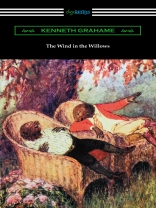First published in 1908, “The Wind in the Willows” is one of the most cherished works of children’s literature ever written, undoubtedly Kenneth Grahame’s most famous work. Originally written as a series of bedtime stories for the author’s son, the story begins at the arrival of spring where we find the good-natured Mole tired of doing his spring cleaning. Mole decides to abandon his cleaning in order to enjoy the fresh air of spring. He journeys to the river where he meets Rat, whom he quickly befriends. Together the two row down the river eventually meeting up with Toad at Toad Hall. There they discover Toad’s current obsession with his horse-drawn caravan, one which he quickly abandons for a motorcar when his caravan is run off the road by one. A fourth friend enters the story in the form of Badger and when it is discovered that Toad’s obsession is becoming self-destructive, Mole, Rat, and Badger intervene to help protect Toad from himself. This collection of stories is a captivating and timeless classic which brings alive the creatures of the woodland. This edition is illustrated by Nancy Barnhart and includes a biographical afterword.
Kenneth Grahame
The Wind in the Willows [EPUB ebook]
The Wind in the Willows [EPUB ebook]
Kup ten ebook, a 1 kolejny otrzymasz GRATIS!
Język Angielski ● Format EPUB ● ISBN 9781420976823 ● Rozmiar pliku 13.9 MB ● Wydawca Neeland Media LLC ● Opublikowany 2020 ● Do pobrania 24 miesięcy ● Waluta EUR ● ID 7932749 ● Ochrona przed kopiowaniem Adobe DRM
Wymaga czytnika ebooków obsługującego DRM












